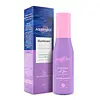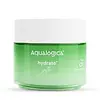What's inside
What's inside
 Key Ingredients
Key Ingredients

 Benefits
Benefits

 Concerns
Concerns

 Ingredients Side-by-side
Ingredients Side-by-side

Water
Skin ConditioningCaprylic/Capric Triglyceride
MaskingSodium Acrylates Copolymer
Lecithin
EmollientDimethicone
EmollientGlyceryl Stearate
EmollientPolyglycerin-3
HumectantPhenoxyethanol
PreservativeEthylhexylglycerin
Skin ConditioningCetearyl Olivate
Sorbitan Olivate
EmulsifyingShea Butter Glycerides
EmulsifyingFragaria Vesca Fruit Extract
AstringentSodium Benzoate
MaskingImidazolidinyl Urea
PreservativeAcrylates/C10-30 Alkyl Acrylate Crosspolymer
Emulsion StabilisingEthoxydiglycol
HumectantTocopherol
AntioxidantSodium Gluconate
Skin ConditioningGlycerin
HumectantGlyceryl Glucoside
HumectantPanthenol
Skin ConditioningAlpha-Arbutin
AntioxidantHyaluronic Acid
HumectantSoyethyl Morpholinium Ethosulfate
Water, Caprylic/Capric Triglyceride, Sodium Acrylates Copolymer, Lecithin, Dimethicone, Glyceryl Stearate, Polyglycerin-3, Phenoxyethanol, Ethylhexylglycerin, Cetearyl Olivate, Sorbitan Olivate, Shea Butter Glycerides, Fragaria Vesca Fruit Extract, Sodium Benzoate, Imidazolidinyl Urea, Acrylates/C10-30 Alkyl Acrylate Crosspolymer, Ethoxydiglycol, Tocopherol, Sodium Gluconate, Glycerin, Glyceryl Glucoside, Panthenol, Alpha-Arbutin, Hyaluronic Acid, Soyethyl Morpholinium Ethosulfate
Water
Skin ConditioningButylene Glycol
HumectantHydroxyethyl Urea
HumectantHydrogenated Polyisobutene
EmollientSilica
AbrasiveAmmonium Polyacryloyldimethyl Taurate
Emulsion StabilisingN-Vinyl Pyrrolidone
Glycerin
HumectantSaccharide Isomerate
HumectantCitric Acid
BufferingSodium Citrate
BufferingCocos Nucifera Water
MaskingCetearyl Olivate
Sorbitan Olivate
EmulsifyingGlyceryl Glucoside
HumectantAloe Barbadensis Leaf Juice
Skin ConditioningPhenoxyethanol
PreservativeAvena Strigosa Seed Extract
Skin ConditioningLecithin
EmollientPotassium Sorbate
PreservativeAphanothece Sacrum Polysaccharide
AbsorbentSodium Hyaluronate
HumectantDisodium EDTA
Sodium Acrylates Copolymer
Parfum
MaskingCI 42053
Cosmetic ColorantCI 19140
Cosmetic ColorantCI 42090
Cosmetic ColorantWater, Butylene Glycol, Hydroxyethyl Urea, Hydrogenated Polyisobutene, Silica, Ammonium Polyacryloyldimethyl Taurate, N-Vinyl Pyrrolidone, Glycerin, Saccharide Isomerate, Citric Acid, Sodium Citrate, Cocos Nucifera Water, Cetearyl Olivate, Sorbitan Olivate, Glyceryl Glucoside, Aloe Barbadensis Leaf Juice, Phenoxyethanol, Avena Strigosa Seed Extract, Lecithin, Potassium Sorbate, Aphanothece Sacrum Polysaccharide, Sodium Hyaluronate, Disodium EDTA, Sodium Acrylates Copolymer, Parfum, CI 42053, CI 19140, CI 42090
Ingredients Explained
These ingredients are found in both products.
Ingredients higher up in an ingredient list are typically present in a larger amount.
Cetearyl Olivate is an emulsifier and texture enhancer. It is derived from the fatty acids of olive oil and Cetearyl alcohol, and is biodegradable.
As an emulsifier, it is used to prevent oils and waters from separating. It can also
Manufacturers use the name Olivem 1000. This ingredient has been found to preserve the natural microbiome of skin. Having a healthy microbiome helps keep our skin healthy and protects against harmful bacteria. This ingredient is grouped with Sorbitan Olivate under the name Olivem 1000.
Learn more about Cetearyl OlivateGlycerin is already naturally found in your skin. It helps moisturize and protect your skin.
A study from 2016 found glycerin to be more effective as a humectant than AHAs and hyaluronic acid.
As a humectant, it helps the skin stay hydrated by pulling moisture to your skin. The low molecular weight of glycerin allows it to pull moisture into the deeper layers of your skin.
Hydrated skin improves your skin barrier; Your skin barrier helps protect against irritants and bacteria.
Glycerin has also been found to have antimicrobial and antiviral properties. Due to these properties, glycerin is often used in wound and burn treatments.
In cosmetics, glycerin is usually derived from plants such as soybean or palm. However, it can also be sourced from animals, such as tallow or animal fat.
This ingredient is organic, colorless, odorless, and non-toxic.
Glycerin is the name for this ingredient in American English. British English uses Glycerol/Glycerine.
Learn more about GlycerinGlyceryl Glucoside is made from glycerol and glucose.
It is a humectant. Humectants help hydrate your skin by drawing moisture to it from the air.
Some foods that contain glyceryl glucoside include sake, miso, and wines.
Learn more about Glyceryl GlucosideLecithin is a term for a group of substances found in the cell membranes of plants, animals, and humans. They are made up of mixture of phospholipids.
This ingredient has emollient and emulsifying properties.
As an emollient, lecithen helps soften the skin and creates a barrier to keep moisture in.
As an emulsifier, it also helps prevent water and oil ingredients from separating. Lecithin can also help ingredients be better absorbed by the skin.
This is because the phospholipids in lecithin produce liposomes. Liposomes help other ingredients get through the skin barrier.
Depending on the source of this ingredient, lecithin may not be fungal acne safe. This is because some sources of lecithin come from soybean oil, which may feed the malassezia yeast that feeds fungal acne.
We recommend reaching out to the brand you are purchasing from to inquire about the source of their lecithin.
Some other names for this ingredient include soy lecithin and deoiled soy lecithin.
Learn more about LecithinPhenoxyethanol is a preservative that has germicide, antimicrobial, and aromatic properties. Studies show that phenoxyethanol can prevent microbial growth. By itself, it has a scent that is similar to that of a rose.
It's often used in formulations along with Caprylyl Glycol to preserve the shelf life of products.
We don't have a description for Sodium Acrylates Copolymer yet.
Sorbitan Olivate is created from the fatty acids in olive oil and sorbitol.
This ingredient is an oil in water emulsifier. It helps stabilize a product by preventing oils and waters from separating. Sorbitan Olivate also helps hydrate the skin.
Manufacturers sell sorbitan olivate under the name OliveM 1000. OliveM 1000 a multifunctional ingredient. It is self-emulsifying. According to a manufacturer, OliveM 1000 does not disrupt natural skin biome.
Due to its olive oil base, this ingredient may not be fungal-acne safe.
Learn more about Sorbitan OlivateWater. It's the most common cosmetic ingredient of all. You'll usually see it at the top of ingredient lists, meaning that it makes up the largest part of the product.
So why is it so popular? Water most often acts as a solvent - this means that it helps dissolve other ingredients into the formulation.
You'll also recognize water as that liquid we all need to stay alive. If you see this, drink a glass of water. Stay hydrated!
Learn more about Water